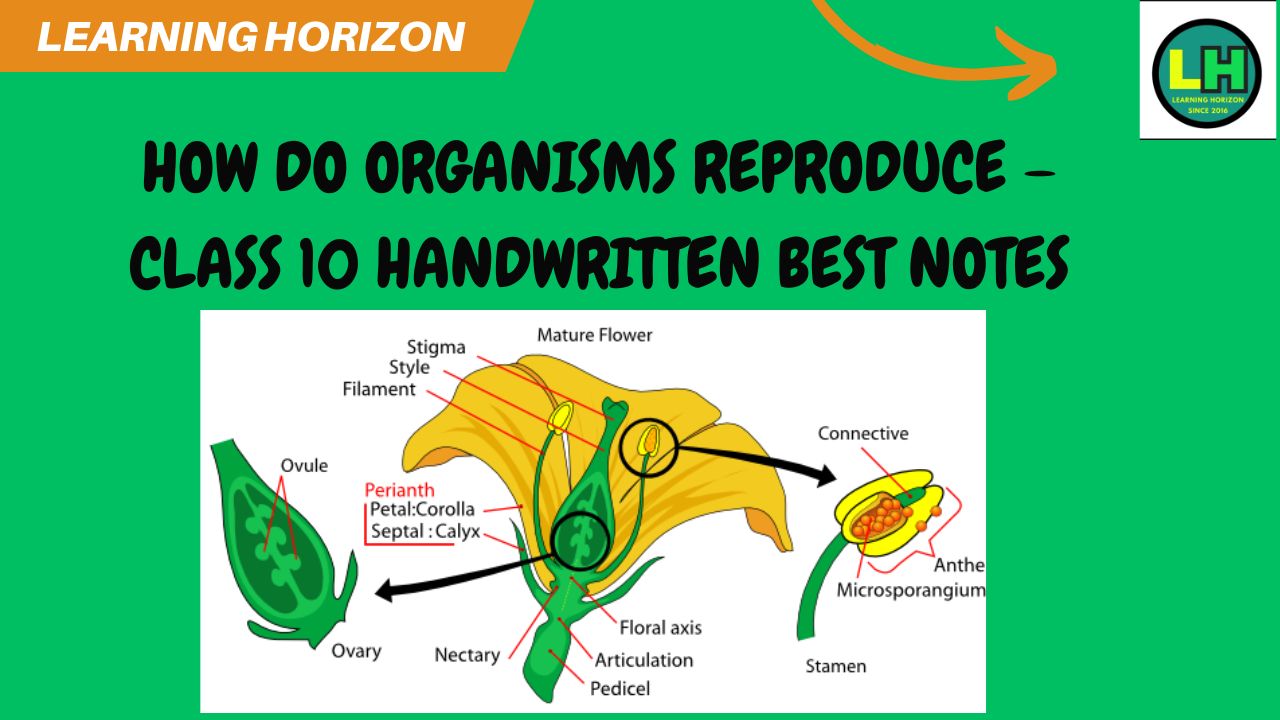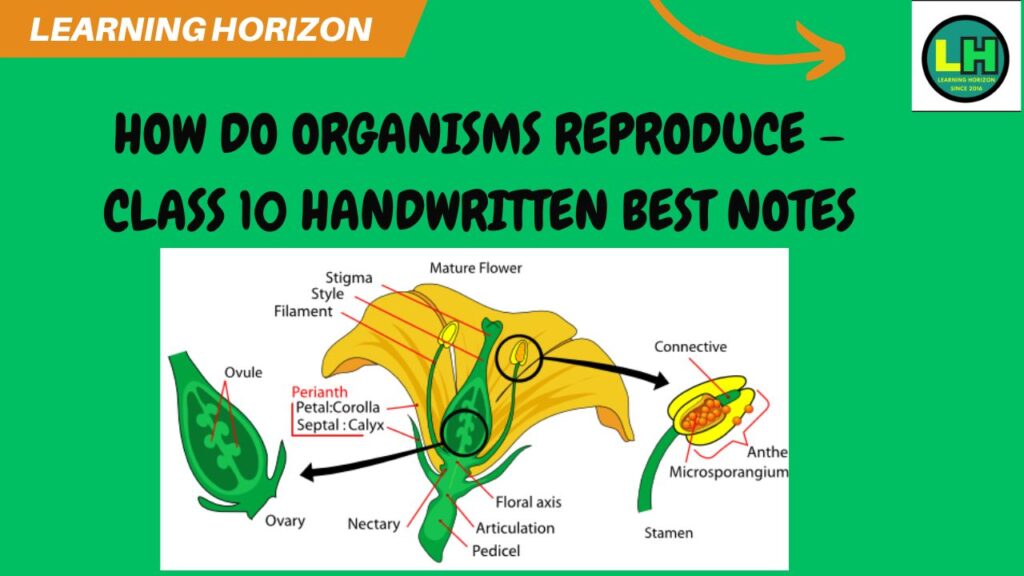
How Do Organisms Reproduce – Class 10 Handwritten best Notes
Introduction
- Reproduction is the biological process by which living organisms produce new individuals of the same species.
- It ensures continuity of life and transfer of genetic material (DNA).
- DNA (Deoxyribonucleic acid) carries hereditary information from parents to offspring.
Importance of Reproduction
- Maintains species continuity.
- Introduces variations, which help in evolution.
- Ensures stability of population.
How Do Organisms Reproduce – Class 10 Handwritten best Notes
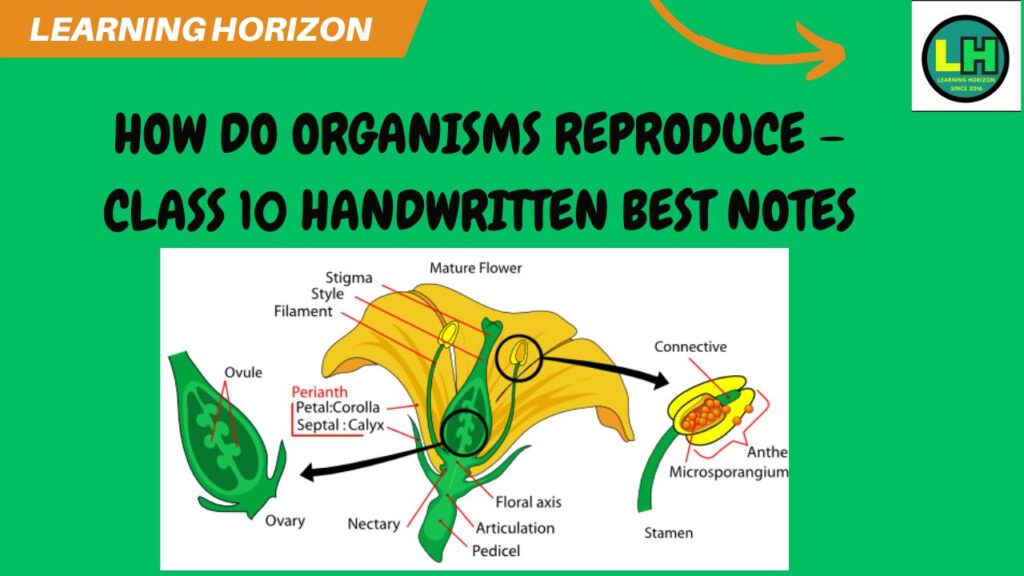
Types of Reproduction
A. Asexual Reproduction
- Involves only one parent.
- Offspring are identical (clones) to parent.
- No formation of gametes.
- Common in unicellular organisms.
Types:
- Binary Fission:
- Parent cell divides into two equal parts.
- Example: Amoeba, Paramecium.
- Multiple Fission:
- Nucleus divides several times before cell splits into many daughter cells.
- Example: Plasmodium.
- Budding:
- Small outgrowth (bud) develops into new organism.
- Example: Hydra, Yeast.
- Fragmentation:
- Body breaks into fragments; each fragment grows into new individual.
- Example: Spirogyra.
- Regeneration:
- Lost body parts regenerate into new organism.
- Example: Planaria.
- Spore Formation:
- Spores (tiny spherical cells) are produced which germinate under suitable conditions.
- Example: Rhizopus (bread mould).
- Vegetative Propagation (in plants):
- New plants grow from vegetative parts (root, stem, leaf).
- Example:
- Stem cutting → Rose
- Leaf → Bryophyllum
- Root → Sweet Potato
Advantages of Asexual Reproduction:
- Fast and simple.
- Only one parent needed.
- Many offspring produced quickly.
Disadvantages:
- No genetic variation.
- Limited adaptability to changing environment.
B. Sexual Reproduction
- Involves two parents (male & female).
- Formation and fusion of gametes (sperm & ovum).
- Results in variation in offspring.
Steps:
- Formation of gametes (by meiosis).
- Fertilization – fusion of male and female gametes → zygote.
- Development of zygote into embryo → new individual.
Sexual Reproduction in Plants
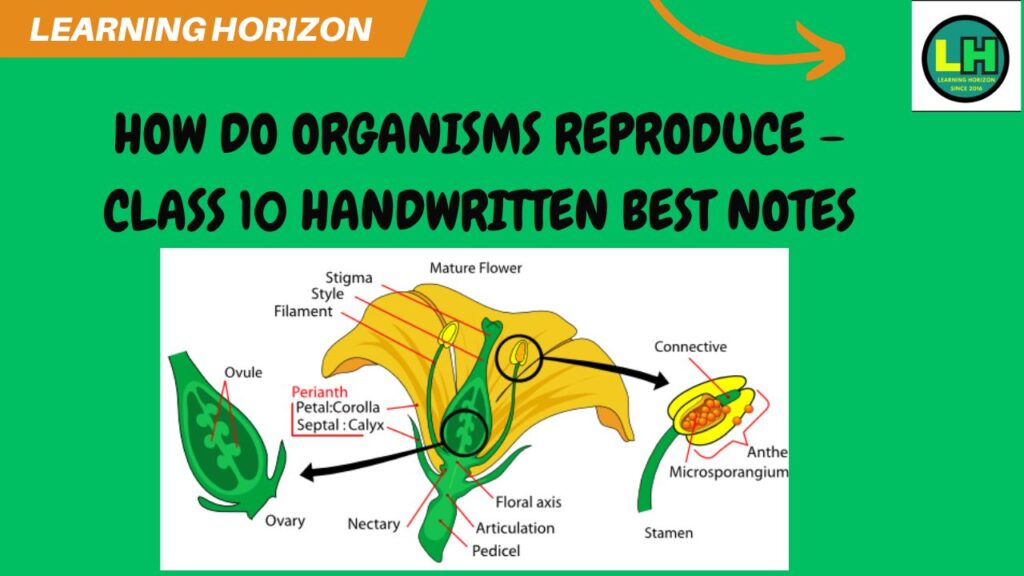
- Flower is the reproductive part.
- Stamen (male part): Anther + Filament → produces pollen (male gamete).
- Carpel/Pistil (female part): Stigma + Style + Ovary → contains ovule (female gamete).
Pollination:
- Transfer of pollen grains from anther to stigma.
- Self-pollination: within same flower or same plant.
- Cross-pollination: between two plants.
Fertilization:
- Pollen grain germinates → pollen tube → reaches ovule → fusion of gametes → zygote.
Post-fertilization changes:
- Zygote → embryo.
- Ovule → seed.
- Ovary → fruit.
Sexual Reproduction in Humans
Male Reproductive System
- Main organs:
- Testes: produce sperms and testosterone.
- Scrotum: keeps testes at lower temperature.
- Vas deferens: transport sperms.
- Seminal vesicle & prostate gland: add fluid to sperm → semen.
- Penis: organ for sperm delivery.
Female Reproductive System
- Main organs:
- Ovaries: produce ova (eggs) and hormones (estrogen, progesterone).
- Oviduct/Fallopian tube: site of fertilization.
- Uterus: embryo development.
- Cervix and Vagina: birth passage.
Process:
- Ovulation: ovary releases egg.
- Fertilization: sperm + egg → zygote (in fallopian tube).
- Implantation: zygote attaches to uterine wall → embryo → fetus.
- Gestation period: about 9 months.
- Birth: baby delivered through vagina.
Reproductive Health
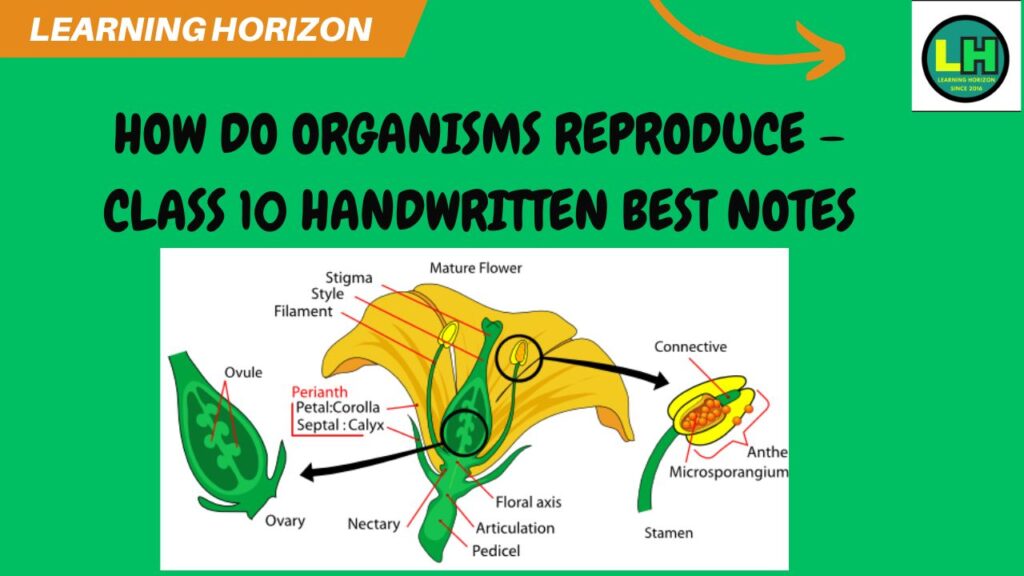
- Knowledge about reproductive organs, safe practices, hygiene, and contraception.
- Methods of Contraception:
- Barrier methods: Condoms.
- Hormonal methods: Pills.
- Surgical methods: Vasectomy, Tubectomy.
- IUDs: Copper-T.
Importance:
- Prevents unwanted pregnancy.
- Reduces STDs (Sexually Transmitted Diseases) like AIDS, Syphilis, Gonorrhea.
- Maintains population control.
Variation
- Differences among individuals due to sexual reproduction and genetic recombination.
- Essential for evolution and survival of species.
Key Terms
- Gamete: reproductive cell (sperm or egg).
- Zygote: fertilized egg.
- Pollination: transfer of pollen.
- Fertilization: fusion of gametes.
- Embryo: developing stage of zygote.
How Do Organisms Reproduce – Class 10 Handwritten best Notes
